
Postdoctoral Scientist, Department of Reproduction Management headed by Professor Thomas Hildebrandt's group at the Leibniz-IZW
In this Researcher Spotlight, we highlight the work of Dr. Susanne Holtz, Postdoctoral Scientist at Leibniz Institute for Zoo and Wildlife Research (Leibniz-IZW) in Germany. After having studied biology and veterinary medicine in Berlin, Dr. Holtze has been working in the department of Reproduction Management headed by Prof. Thomas Hildebrandt's group at the Leibniz-IZW since 2012.
Her research involves various species of animals with the main focus on understanding reproductive parameters. The practical applications of this knowledge are aimed at enhancing the reproductive success of endangered species. Ultimately, Prof. Hildebrandt’s group wants to increase their knowledge of wildlife species to contribute to their conservation.
For their team, imaging is indispensable for performing veterinary interventions such as sex determination of various species, selecting suitable breeding pairs, performing reproductive assessments, artificial inseminations, ovum pick-up or assessing the outcome of hormonal interventions. High-frequency ultrasound is needed to examine small animal species, such as naked mole rats, bats, Etruscan shrews, and olms.
Olms, in particular, are very unique subjects. Prof. Hildebrandt and Dr. Holtze have been doing research for several years on this species. They have worked also on the only olms to be found in Germany together with the cave biologist in charge, Dr. Anne Ipsen, in Hermann’s cave in Harz. For 65 years now the olms have been scientifically investigated and successfully bred in Moulis, France. These cave salamanders which adapted to a life in complete darkness, have been kept and bred in a cave laboratory in the French Pyrenees for the past 25 years by a dedicated French scientist, Olivier Guillaume. Dr. Guillaume is a Research Engineer and heads the Department of Experimental Ecology at the French Centre National de la Recherche Scientifique (CNRS).
.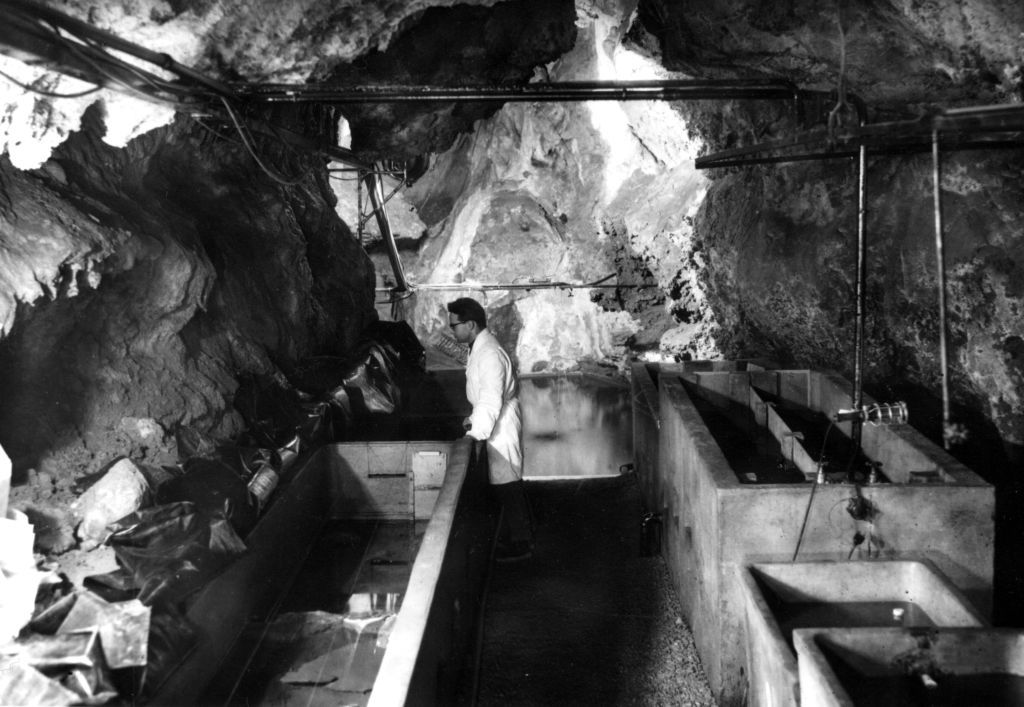 Moulis cave (1950's), photograph by CNRS
Moulis cave (1950's), photograph by CNRS
The olms of Moulis originated from Postojna, a large cave in Slovenia, shaped by an underground river. Olms are an endangered species and have laid eggs in very few places in the world. Under human care, the hatching of young olms is very rare. Researchers don’t know much about these animals, how they live, what exactly they feed on when they reproduce, and why – at least in captivity – they can live for up to 100 years. The group deals with the question of how these blind, snake-like animals can be protected from the effects of climate change and intensive land use.
Very recently, young olms, 35 minute “dragon fish”, have hatched in the cave laboratory. They will slowly be growing over the course of the coming 15 years inside of an aquarium and later on in large basins filled with the pure subterranean cave river water. Fifteen years is how long it takes olms to become sexually mature. Statistically, however, only one of the 35 mini-dragons will reach the age of 15. Researchers will need considerable amounts of time to gather knowledge on the biology and ecology of this species, which has existed for possibly millions of years.
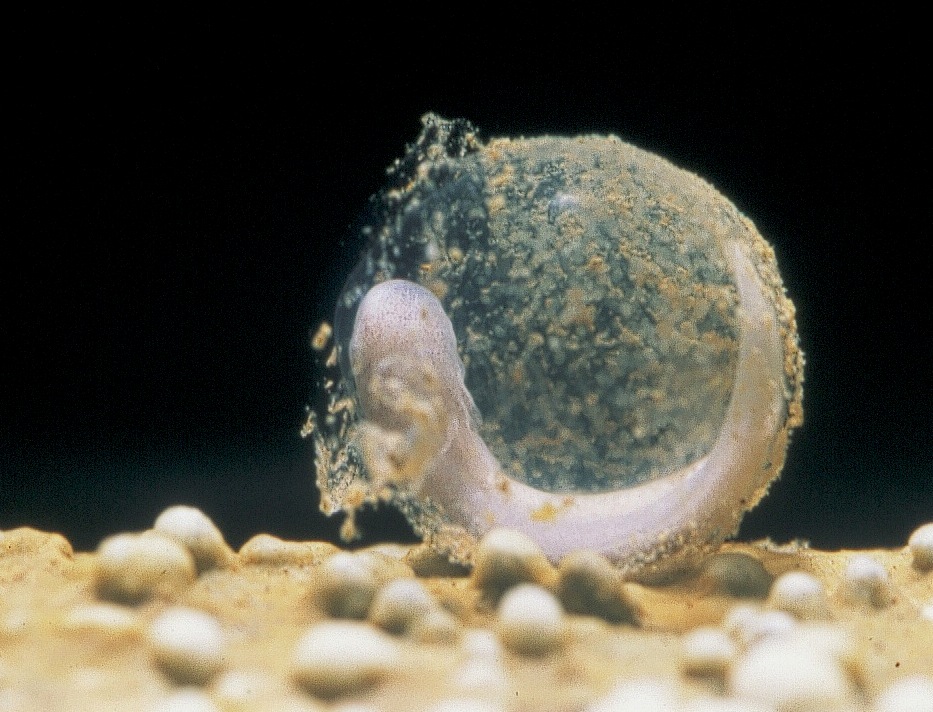 Olm larva in egg in Moulis, photograph by Olivier Guillaume, CNRS
Olm larva in egg in Moulis, photograph by Olivier Guillaume, CNRS
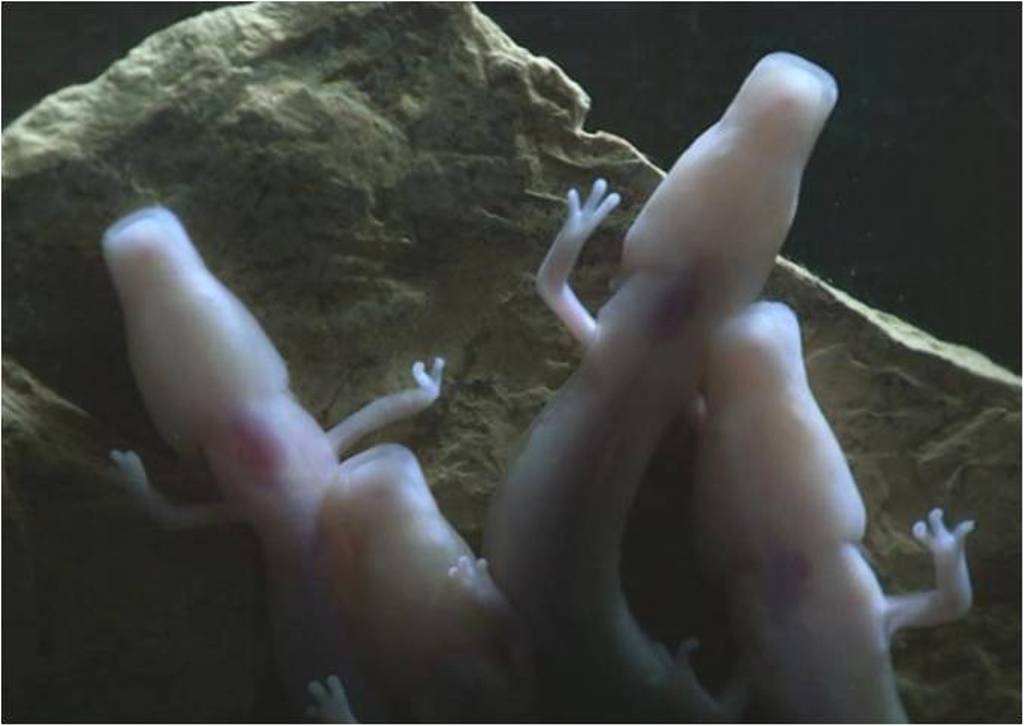 Young olm in Moulis, photograph by Olivier Guillaume, CNRS
Young olm in Moulis, photograph by Olivier Guillaume, CNRS
Using ultra-high frequency ultrasound (Vevo 3100), the health status and status of reproductive organs can be visualized, providing valuable information on the functioning of reproductive systems and the timing of reproductive events in different species. With the olms, Dr. Holtze together with her colleagues has been able to successfully determine sex, health condition and breeding potential of the animals (Proteus anguinus; Holtze et al. 2017). This work was extended with the research performed in November 2018 in Moulis, France and is expected to continue further. 1
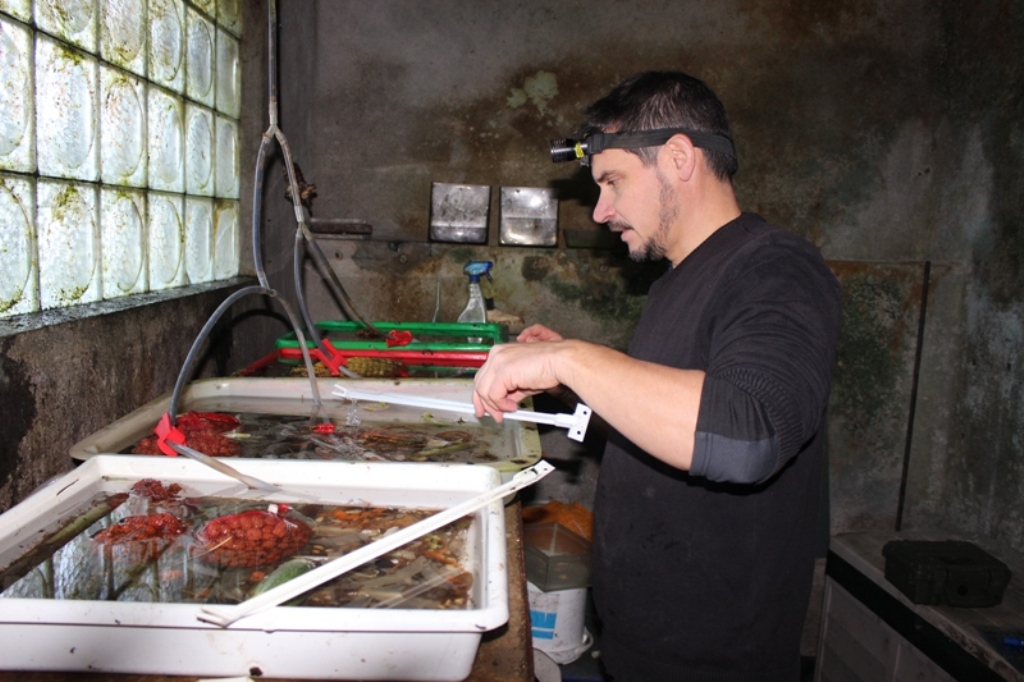 Dr. Guillaume in his cave laboratory, photograph by Anne Ipsen
Dr. Guillaume in his cave laboratory, photograph by Anne Ipsen
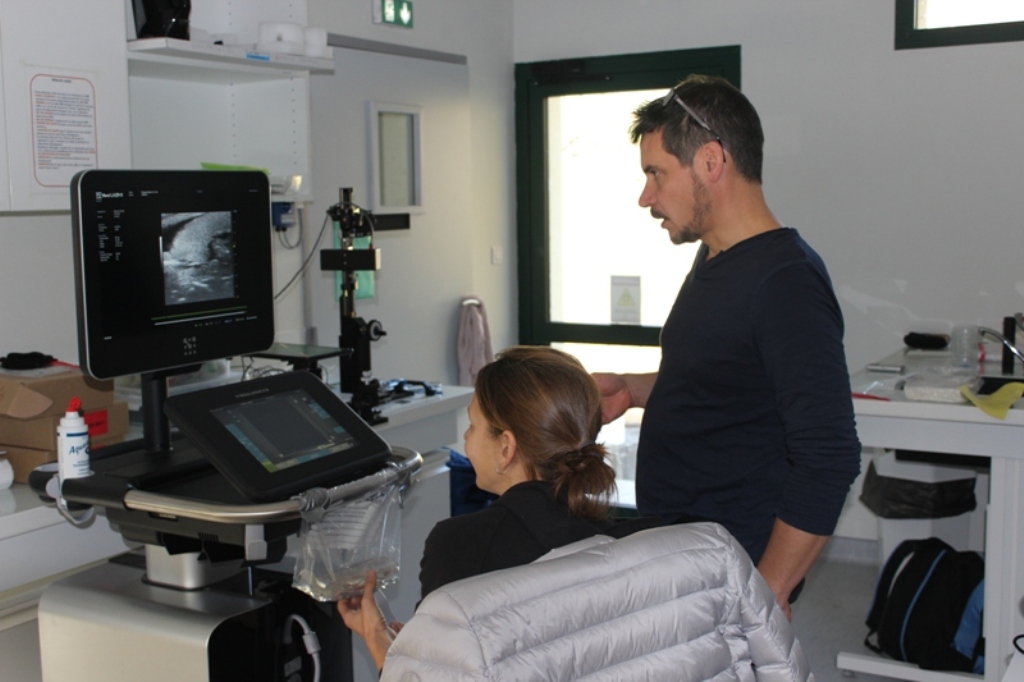 Dr. Holtze and Dr. Guillaume during ultrasound examination, photograph by Anne Ipsen
Dr. Holtze and Dr. Guillaume during ultrasound examination, photograph by Anne Ipsen
“What excites me about my work is that I get to make a small contribution to species conservation, which is becoming more and more important in times of the ongoing 6th mass extinction,” says Dr. Holtze. “My hope is that the enthusiastic team effort of our department, dedicated to species conservation, will have a positive impact on the future biodiversity of the planet.”
1 Holtze S, Lukač M, Cizelj I, Mutschmann F, Szentiks CA, Jelić D, Hermes R, Göritz F, Braude S, Hildebrandt TB (2017). Monitoring health and reproductive status of olms (Proteus anguinus) by ultrasound. PLoS One, 12(8), e0182209.
Interested in being our next Researcher or team to be in the spotlight? We want to hear from you!